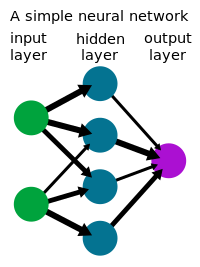
Photo from wikipedia
A genetic algorithm (GA)-based water quality model is built to predict fecal coliform from five independent factors, namely two-day cumulative precipitation, temperature, urban, forest, and agricultural land use factors. The… Click to show full abstract
A genetic algorithm (GA)-based water quality model is built to predict fecal coliform from five independent factors, namely two-day cumulative precipitation, temperature, urban, forest, and agricultural land use factors. The current work succeeds the previous work of the corresponding author which studied the relationship between fecal coliform and the five factors using artificial neural networks and GIS for a watershed consisting of Green River in Kentucky, USA. In the current paper, the main idea is to develop the hyper-parameters (center and radius) of the radial basis function (RBF) neural network from a GA. A GA is one of the nature-inspired evolutionary algorithms, which is an iterative one and successful in solving many optimization problems. Genetic algorithms are generally used for finding the maxima or minima from a given set of population members. They can also be used to tune the hyper-parameters which are found in the current paper for application in water quality (or fecal coliform) modeling using RBF neural networks. The predicted result using GA-based RBF neural networks is found to be slightly better than without using GAs.
Journal Title: Neural Computing and Applications
Year Published: 2019
Link to full text (if available)
Share on Social Media: Sign Up to like & get
recommendations!